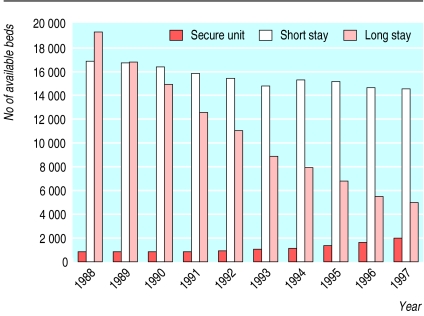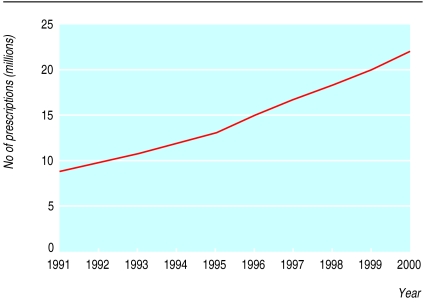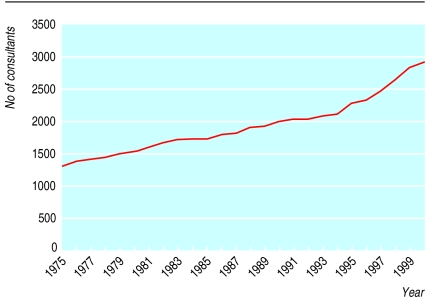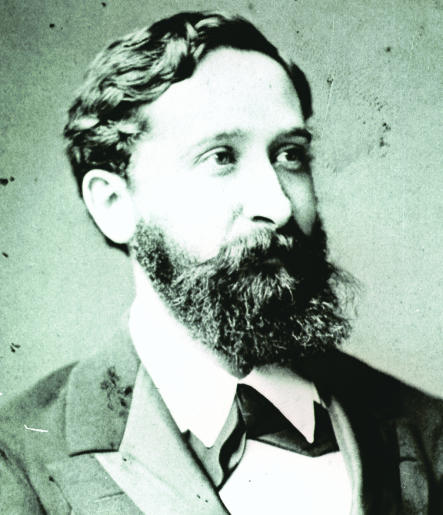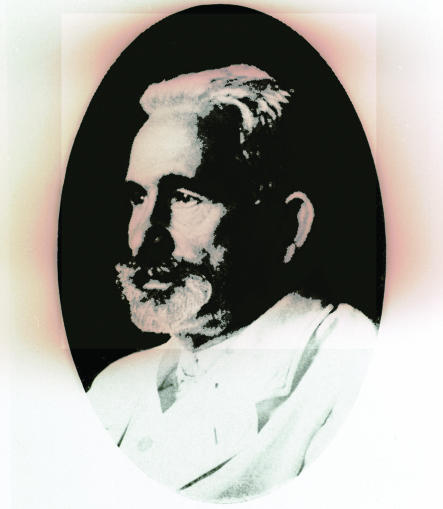Much of the expansion of psychiatry in the past few decades has been based on a biomedical model that encourages drug treatment to be seen as a panacea for multiple problems. Psychiatrist Duncan Double is sceptical of this approach and suggests that psychiatry should temper and complement a biological view with psychological and social understanding, thus recognising the uncertainties of clinical practice
The increasing accountability of doctors following the deaths of children in the Bristol Royal Infirmary's paediatric cardiac surgical unit has focused attention on the foundations of medical practice. Ian Kennedy, who chaired the Bristol inquiry,1 provides a direct link with earlier cultural critics of medicine—such as Ivan Illich—in his Reith lectures in 1980 about “unmasking” medicine.2
Illich made specific comments about psychiatry in his critique of medicalisation and the limits to medicine.3 He attended the 1977 world federation for mental health conference in Vancouver, Canada, where he debated the issue of whether mental health professionals are necessary.4 He maintained that “do it yourself” care was preferable. The central concern of Illich's work was the legitimacy of professional power, whether in health systems or in other systems, such as education.
There is no direct equivalent in general medicine of the “anti-psychiatry” movement, commonly seen as a passing phase in psychiatry and associated with the names of R D Laing and Thomas Szasz.5 Illich came from outside medicine, whereas the proponents of anti-psychiatry came from within psychiatry, even if their influence was subsequently marginalised by mainstream psychiatrists.
The cultural role of psychiatry is more obviously open to criticism than is the case in the rest of medicine. This is because of its direct relation to social control through mental health legislation. Although diagnosis of mental illness should not be predicated on social conformity, in practice this criterion may be applied. During the 1970s and 1980s, for example, reports that the authorities in the Soviet Union were incarcerating substantial numbers of dissidents in mental asylums caused widespread concern in the West. Over recent years, the use of psychiatry as a tool of state repression in China seems to be increasing.6
A modern critique of psychiatry needs to move on from the perspective exemplified by Illich and the proponents of anti-psychiatry that psychiatry should not be imposed on anyone, as this view is not consistent with a practice in which compulsory treatment has been integral. It was only after the Mental Health Treatment Act 1930 that voluntary treatment became an option in Britain. None the less, because of the potential for abuse, a critical perspective that scrutinises the role of coercion in psychiatric treatment is still required in the current debate about the reform of the Mental Health Act in the United Kingdom.
I outline here the expansion of psychiatry over the past half century and offer a sceptical view of this development.
Summary points
Expectations of solutions to mental health problems continue to rise
This raises the question of the legitimacy of psychiatric interventions for common personal and social problems
Much of the expansion of psychiatry has been based on a biomedical model
This approach encourages drug treatment to be seen as a panacea for multiple problems
Refocusing psychiatry on the patient as a person emphasises the uncertainty of psychiatric practice
Growth in mental health service activity and technology
Despite the reduction in psychiatric beds in England over recent years (fig 1), mental health service activity has increased considerably. The annual number of antidepressant prescriptions, for example, has more than doubled over the past seven years (fig 2). Similarly, the number of consultant psychiatrists has more than doubled over the past 22 years (fig 3).
Figure 1.
Average daily number of available mental illness beds in England (excluding beds for children and elderly people). Source: NHS hospital inpatient data
Figure 2.
Annual number of prescriptions for antidepressants in England. Data from NHS prescription cost analysis
Figure 3.
Number of consultants in psychiatry in England over past 25 years. Data from NHS medical workforce statistics
As the number of psychiatric beds has decreased, the number of people in prison with a mental disorder has risen, with a higher proportion of women inmates having mental health problems than men.7 Authors in the United States suggest that prisons are replacing mental hospitals, but the data could be explained either as the “psychiatricisation” of criminality or as the increasing diagnosis of mental illness in prisoners not previously recognised as being mentally ill.
As more resources have been provided for mental health services, more resources are perceived to be needed.8 Disillusionment is inevitable in a system of mental health care where an increase in professional staffing cannot completely resolve the perceived unmet need of the population.
Demand is unavoidably high as mental health problems are common. The proportion of men and women with a neurotic disorder in a given week was found to be 12.3% and 19.5% respectively in the psychiatric morbidity survey, the largest epidemiological study of the prevalence of psychiatric disorders conducted in the United Kingdom.9
As the expectation of solutions to mental health problems rises through the increasing availability of the mainstay psychiatric treatments (psychotropic drugs and “talking” therapies, such as counselling), the traditional boundaries of psychiatric disorder have broadened. Everyday problems regarded as the province of other social spheres become “medicalised” by psychiatry. Mental health care may function as a panacea for many different personal and social problems.
The diagnosis of attention-deficit/hyperactivity disorder in children, for example, has increased dramatically over recent years, paralleled by an increase in the prescription of stimulant drugs in the United States.10 This trend is also apparent in England and is likely to be reinforced by recent guidelines from the National Institute for Clinical Evidence.11 The behaviour of children in whom attention-deficit/hyperactivity disorder is identified overlaps with behaviours commonly displayed by children when they feel frustrated, anxious, bored, abandoned, or in some other way stressed. The obvious critical view is that the social phenomenon of mass drugging of children indicates not a genuine increase in mental disorder but rather a displacement strategy for the difficult task of improving family and school life. It is indeed likely that recourse to drug treatment discourages self responsibility and thereby exacerbates the underlying difficulties that it is supposed to remedy.
Attention-deficit/hyperactivity disorder has also become established over the past 10 years as an adult disorder, and it is now regarded by some as the most common chronic undiagnosed psychiatric disorder in adults.12
The expansion of psychiatry is also reflected in the marketing of selective serotonin reuptake inhibitors for neurotic conditions other than depression. Paroxetine, the drug with the greatest net ingredient cost to the NHS in England in 2000, is now approved in the United states for use in multiple disorders: depression, generalised anxiety disorder, social anxiety disorder, panic disorder, obsessive-compulsive disorder, and post-traumatic stress disorder. Selective serotonin reuptake inhibitors have even been promoted and used as lifestyle drugs.13
Two disorders illustrate further the process of medicalisation. Firstly, social anxiety disorder could be seen as the process of medicalising shyness. The disorder is characterised by a marked and persistent fear of social or performance situations in which embarrassment may occur. It is said to be the third most common psychiatric disorder in the United States, after major depression and alcohol dependence. Lifetime prevalence has been estimated at 13.3%.14 Some claim that the condition is not just ordinary shyness and that it is a common public health problem.15 None the less, although definitions of the syndromes of shyness and social phobia may differ, the distinction is difficult to make empirically. Furthermore, we should be sceptical about the potency and benefits of drugs for this condition.
Secondly, the diagnosis of post-traumatic stress disorder was officially recognised after an essentially political struggle to acknowledge the suffering of the Vietnam war veterans. Subsequently, the diagnosis has become increasingly associated with less extreme experiences, encouraged by compensation claims for psychological damage. However, medicalisation of traumatic human suffering runs the risk of reducing it to a technical problem. Providing debriefing and counselling, for example, may not be the most appropriate focus of humanitarian relief operations in wars and other disasters.16
Diagnoses are not diseases
The number of diagnostic categories has increased in the Diagnostic and Statistical Manual of Mental Disorders of the American Psychiatric Association from 106 in DSM-I in 1952 to 357 in DSM-IV in 1994.17 This increase has occurred in the context of attempts to make psychiatric diagnosis more reliable by the introduction in 1980 of DSM-III.
DSM-III encouraged the reification of psychological conditions. Social phobia and post-traumatic stress disorder, for example, were first included in international classifications in DSM-III.
Confidence in psychiatric classification was dampened by the classic study of Rosenhan.18 In this, “pseudo-patients,” who were accomplices of the experimenter, gained admission to different hospitals, each presenting with a single complaint—hearing a voice that said “empty,” “hollow,” or “thud.” On admission to the psychiatric ward, each pseudo-patient stopped simulating any symptom of abnormality. All of them received a psychiatric diagnosis, mainly schizophrenia. Rosenhan concluded from this experiment that psychiatric diagnosis is subjective and does not reflect inherent patient characteristics. As a follow up, staff of a research and teaching hospital were informed that at some time during the following three months, one or more pseudo-patients would attempt to be admitted. No such attempt was made. Yet about 10% of 193 real patients were suspected by two or more staff members to be pseudo-patients. After the publication of Rosenhan's study, psychiatric diagnoses have become more rigidly defined by operational criteria as in DSM-III.
This attempt to make psychiatric diagnosis more reliable was associated with a return to a biomedical model of mental illness. The approach has been called neo-Kraepelinian, as it promotes many of the ideas associated with the views of Emil Kraepelin, regarded as the founder of modern psychiatry (box B1).19
Box 1.
Nine beliefs summarising the perspective of the neo-Kraepelinian approach19
- Psychiatry is a branch of medicine
- Psychiatry should use modern scientific methods and base its practice on scientific knowledge
- Psychiatry treats people who are sick and need treatment for mental illness
- A boundary exists between normal and sick people
- Mental illness is not a myth; there are many mental illnesses. It is the task of scientific psychiatry to investigate the causes, diagnosis, and treatment of these mental illnesses
- The focus of psychiatric physicians should focus on the biological aspects of mental illness
- There should be an explicit and intentional concern with diagnosis and classification
- Diagnostic criteria should be codified, and a legitimate and valued area of research should be to validate such criteria by various techniques. Psychiatry departments in medical schools should teach these criteria and not belittle them, as has been the case for many years
- Statistical techniques should be used in research efforts directed at improving the reliability and validity of diagnosis and classification
Diagnosis does not need to be exclusively in terms of a biomedical model. It can be about creating an understanding of the reasons for a patient's presentation. Indeed, focusing on the somatic nature of a hypothetical underlying disorder tends to deny the patient as a person and objectifies patients so that they become merely bodies needing treatment. Although biological explanations are important—as the brain is the substrate for cognition, emotions, and behaviour—understanding personal action is not helped by eliminating the meaning of people's distress and the psychological and social origins of their difficulties.
An adverse consequence of the biomedical model is that it encourages a tendency to believe that people are powerless to do anything about their condition. Such an implication may be obvious, for example, in the case of alcoholism,20 but the same principle also applies to other mental health problems, even psychosis, despite such symptoms and behaviour being more difficult to understand.
The somatic model has always tended to dominate psychiatric thinking, but psychological and psychodynamic explanations were more widely accepted over 50 years ago. Adolf Meyer, the foremost American psychiatrist in the first half of the 20th century, insisted on regarding his philosophical approach to psychiatry, with its emphasis on the understanding of the person, as an advance over the mechanistic philosophy of the 19th century.21 His work is now largely neglected in the modern biological consensus in psychiatry. He warned against going beyond statements about the person to wishful “neurologising tautology” about the brain (box B2 summarises the assumptions of his biopsychological view22).
Box 2.
Assumptions of Meyer's biopsychological model22
- The boundary between mentally well and mentally ill people is fluid because normal people can become ill if exposed to sufficiently severe trauma
- Mental illness is conceived along a continuum of severity from neurosis through borderline conditions to psychosis
- An untoward mixture of noxious environment and psychic conflict causes mental illness
- The mechanisms by which mental illness emerges in an individual are psychologically mediated
- Postmodernity provides doctors with an opportunity to redefine their roles and responsibilities
Psychiatry needs to return to a biopsychological view to limit its excesses—in other words, it needs to temper and complement a biological view with psychological and social understanding, thus recognising the uncertainties of clinical practice. Such an approach conforms to the new direction that has been called “post-psychiatry” (box B3).23
Box 3.
Summary of “post-psychiatry” (from Bracken and Thomas23)
- Faith in the ability of science and technology to resolve human and social problems is diminishing
- This creates challenges for medicine, particularly traditional psychiatry
- Psychiatry must move beyond its “modernist” framework to engage with recent government proposals and the growing power of service users
- Post-psychiatry emphasises social and cultural contexts, places ethics before technology, and works to minimise medical control of coercive interventions
The Critical Psychiatry Network
The Critical Psychiatry Network has recently been formed to provide a network to develop a critique of the current psychiatric system. Its aim is to avoid the polarisation of psychiatry and anti-psychiatry. Anti-psychiatry may have failed because its main proponents were ultimately more interested in personal and spiritual growth. Moreover, its message became diluted and confused by combining conflicting viewpoints. The Critical Psychiatry Network is dedicated to establishing a constructive framework for renewing mental health practice (www.criticalpsychiatry.co.uk).
Figure.
NATIONAL PORTRAIT GALLERY
R D Laing: “The experience and behaviour that gets labelled schizophrenic is a special strategy that a person invents in order to live in an unlivable situation”
Figure.
UPSTATE MEDICAL UNIVERSITY HEALTH SCIENCES LIBRARY
Thomas Szasz: “Classifying thoughts, feelings, and behaviors as diseases is a logical and semantic error”
Figure.
NATIONAL LIBRARY OF MEDICINE
Alfred Meyer: “A diagnosis usually does justice to only one part of the facts and is merely a convenience of nomenclature”
Figure.
NATIONAL LIBRARY OF MEDICINE
Emil Kraepelin: “Clinical observation must be supplemented by thorough examination of healthy and diseased brains”
Footnotes
Competing interests: None declared.
References
- 1.Bristol Royal Infirmary. Learning from Bristol: the report of the public inquiry into children's heart surgery at the Bristol Royal Infirmary 1984-1995. London: Stationery Office; 2001. www.bristol-inquiry.org.uk/ . (Cm 5207.) www.bristol-inquiry.org.uk/ [Google Scholar]
- 2.Kennedy I. The unmasking of medicine. London: Granada; 1983. [Google Scholar]
- 3.Illich I. Limits to medicine. Medical nemesis: the expropriation of health. London: Marion Boyers; 1995. [Google Scholar]
- 4.Beiser M, Fleming JAE, Kirkpatrick D, Remick RA, editors. Today's priorities in mental health. Miami, FL: Symposia Specialists; 1978. [Google Scholar]
- 5.Tantum D. The anti-psychiatry movement. In: Berrios GE, Freeman H, editors. 150 Years of British psychiatry, 1841-1991. London: Gaskell; 1991. [Google Scholar]
- 6.Munro R. Judicial psychiatry in China and its political abuses. Columbia Journal of Asian Law 1999;13. www.columbia.edu/cu/asiaweb/JAL001_1.htm
- 7.Singleton N, Meltzer H, Gatward R. Psychiatric morbidity among prisoners in England and Wales. London: Stationery Office; 1998. [Google Scholar]
- 8.Richman A, Barry A. More and more is less and less. The myth of massive psychiatric need. Br J Psychiatry. 1985;146:164–168. doi: 10.1192/bjp.146.2.164. [DOI] [PubMed] [Google Scholar]
- 9.Meltzer H, Gill B, Petticrew M, Hinds K. The prevalence of psychiatricmorbidity among adults living in private households. London: HMSO; 1995. . (OPCS surveys of psychiatric morbidity in Great Britain, report No 1.) [Google Scholar]
- 10.Zito JM, Safer DJ, dosReis S, Gardner JF, Boles J, Lynch F. Trends in prescribing of psychotropic medication in preschoolers. JAMA. 2000;283:1025–1030. doi: 10.1001/jama.283.8.1025. [DOI] [PubMed] [Google Scholar]
- 11.Lord J, Paisley S. The clinical effectiveness and cost-effectiveness of methylphenidate for hyperactivity in childhood. London: National Institute for Clinical Excellence; 2000. . (Version 2.) [Google Scholar]
- 12.Wender PH. Attention-deficit hyperactivity disorder in adults. Psychiatr Clin North Am. 1998;21:761–774. doi: 10.1016/s0193-953x(05)70039-3. [DOI] [PubMed] [Google Scholar]
- 13.Charlton BG. Psychopharmacology and the human condition. J R Soc Med. 1998;91:699–701. doi: 10.1177/014107689809101117. [DOI] [PMC free article] [PubMed] [Google Scholar]
- 14.Kessler RC, McGonagle KA, Ahao S, Nelson CB, Hughes M, Eshleman S, et al. Lifetime and 12-month prevalence of DSM-III-R psychiatric disorders in the United States. Results from the national comorbidity survey. Arch Gen Psychiatry. 1994;51:8–19. doi: 10.1001/archpsyc.1994.03950010008002. [DOI] [PubMed] [Google Scholar]
- 15.Stein MB, Gorman JM. Unmasking social anxiety disorder. J Psychiatry Neurosci. 2001;26:185–189. [PMC free article] [PubMed] [Google Scholar]
- 16.Bracken PJ, Petty C, editors. Rethinking the trauma of war. London: Free Association; 1998. [Google Scholar]
- 17.American Psychiatric Assocation. Diagnostic and statistical manual of mental disorders. 4th ed. Washington: APA; 1994. [Google Scholar]
- 18.Rosenhan DL. On being sane in insane places. Science. 1973;179:250–258. doi: 10.1126/science.179.4070.250. [DOI] [PubMed] [Google Scholar]
- 19.Klerman GL. The evolution of a scientific nosology. In: Shershow JC, editor. Schizophrenia: science and practice. Cambridge, MA: Harvard University Press; 1978. [Google Scholar]
- 20.Jellinek EM. The disease concept of alcoholism. New Haven, CT: Hillhouse Press; 1960. [Google Scholar]
- 21.Winters E, editor. The collected papers of Adolf Meyer. 1-4. Baltimore: Johns Hopkins Press; 1951-2. [Google Scholar]
- 22.Wilson M. DSM-III and the transformation of American psychiatry: a history. Am J Psychiatry. 1993;150:399–410. doi: 10.1176/ajp.150.3.399. [DOI] [PubMed] [Google Scholar]
- 23.Bracken P, Thomas P. Post-psychiatry: a new direction for mental health. BMJ. 2001;322:724–727. doi: 10.1136/bmj.322.7288.724. [DOI] [PMC free article] [PubMed] [Google Scholar]



